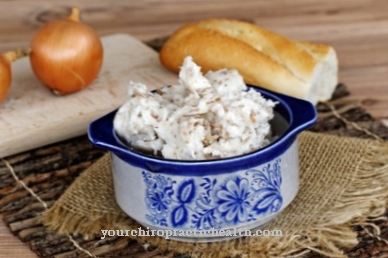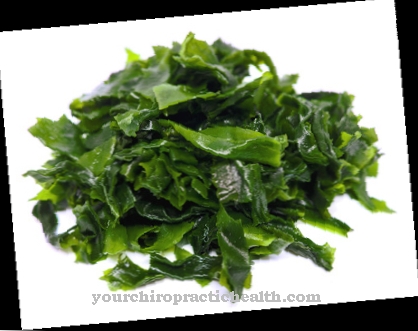The Fire bean, a legume, belongs to the butterfly family. Other well-known names are Beetle- or Runner bean. The name of the fire bean, which originally comes from the humid mountain valleys of Central America, results from the mostly fiery red flowers.
What you should know about the fire bean

The fire bean, a relative of the garden bean, originally comes from tropical America. It came to Europe in the 17th century. The plant is herbaceous, annual, biennial or perennial. Annuals are usually grown in our regions, and perennial in warmer areas.
The fire bean owes its name to the strong red, decorative flowers, which are why the fire bean is often used as an ornamental plant. The butterfly blossoms are in long racemes and they bloom from June to September. The fire bean is a climbing plant that can grow seven meters high. The fruit pods can be 25 cm long and are similar to those of the garden beans. At first they are green and later they turn brown. This contains the seeds or beans, which are usually brown, black, spotted red or purple. The leaves, which sit on long stems, consist of three egg-shaped individual leaflets.
The fire bean can be grown in your own kitchen garden to harvest tasty fruits. But it is also suitable as a privacy screen. The fire bean prefers sunny and sheltered locations, but it also tolerates partially shaded locations. Since the fire bean has relatively deep roots, the soil should be loose, well-drained and moist. The planting time for the pre-grown fire bean begins in mid-May. Now the seeds are sown in the bed or in a pot. Beans from your own harvest or, alternatively, from specialist gardeners can be used for sowing. The seeds of the fire bean, i.e. the beans, remain viable for three to four years.
The fire bean can also be planted on the balcony, for example in a tub. However, there must be enough space for a climbing aid, on which the tendrils of the plant can wind upwards. Simple garden soil is sufficient for growing the fire bean. The earth should, however, be loosened up well. With the addition of compost, an adequate supply of nutrients for the fire bean is ensured.
Importance to health
In folk medicine, the dried shells of the fire bean were used as a diuretic and diabetes-supporting agent. In the meantime, the low-fat bean is often integrated into the menu, as it is an excellent source of energy and fiber.
The high energy value that the fire bean provides is particularly important for athletes. Due to the very good proportion of fiber, the fire bean is also suitable as a measure against constipation as well as for the prevention of diverticula and colon cancer. In addition, the high fiber content ensures a longer satiety, a promotion of digestion, a lowering of the cholesterol level and a regulation of the blood sugar level. The high protein content is also impressive, from which not only vegans and vegetarians benefit, because it turns the fire bean into a wholesome meat substitute.
Ingredients & nutritional values
100 grams of cooked fire beans contain around 110 kcal. The legume is also an essential source of vegetable protein. The very low-fat fire bean also provides a lot of carbohydrates. The other valuable ingredients in the fire bean include numerous minerals and fiber as well as secondary plant substances.
Intolerances & allergies
The fire bean contains a fairly high proportion of the harmful substance phasin. Therefore, it should never be consumed raw. Just three to ten raw seeds cause symptoms of poisoning after 30 to 90 minutes. These include severe vomiting, cramps, severe indigestion, bloody stomach and intestinal inflammations and even collapse. However, the harmful substance is destroyed by temperatures in excess of 75 degrees Celsius. The firebeans can then be enjoyed without hesitation.
Shopping & kitchen tips
The seeds of the fire bean are available either dried or pre-cooked and canned. The former should be stored dry and tightly closed. They can be kept for about a year. Firebeans that have been stored for too long remain hard when cooked, making them inedible. With the fire bean in a can, it is important to observe the best-before date.
Once the can has been opened, the bean should be used up quickly. Young-harvested firebeans are sometimes also available with pods at the markets. They keep in the refrigerator for two to three days, and they taste best fresh. When buying the fire bean, care should be taken to ensure that the skin of the fruit is shiny, smooth and has no cracks. The bean must be full and strong in color. Before the dried coarse bean is cooked, it must be soaked completely covered with liquid for at least 12 hours. The cooking time is then around two hours.
It should be noted that the fire bean swells a lot, so that a salad for four people can be prepared from around 250 grams of the dry beans. Anyone who suffers from flatulence can add bay leaves, savory, ginger or caraway seeds to the cooking water. If the fire bean is to be used for a salad or a main course, it is advisable to add salt to the cooking water. If you like, the legume can also be tasted sweet and a little sugar can be added. After cooking, the bean can also be frozen, which can also reduce the bloating effect.
Preparation tips
The fire bean can be used in a variety of ways in the kitchen. It is mainly used as a vegetable, but it is also a good ingredient in a soup or stew. In addition, a fine puree can be made from the fire bean or the legume can be used to fill cucumbers. In Styria, the fire bean is also used for various pastries and desserts.
The well-known recipe with the fire bean, the beetle bean salad, which consists of onion slices, vinegar, pumpkin seed oil and of course the fire beans, also comes from Styria. The fire bean is also popular for the Mexican dish chili con carne. To do this, the canned beans and corn are rinsed in a sieve with plenty of water. Either the entire pods or only the very nutritious bean kernels are eaten from the fire bean.
The latter are kidney-shaped and, depending on the variety, white or piebald in different colors. Therefore, they also look very decorative and can be used for a buffet. The seeds of the fire bean may not be consumed raw, but only cooked. There are no limits to the imagination when it comes to the other ingredients when using the fire bean. Basically, what tastes good is allowed.



























